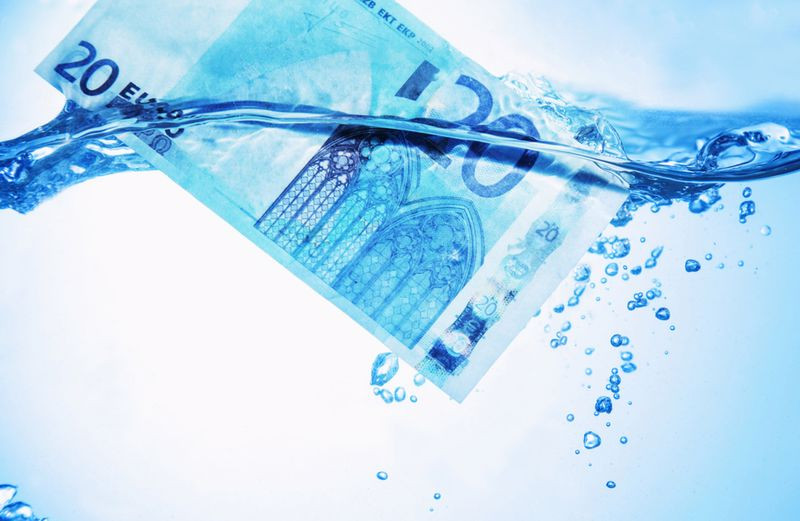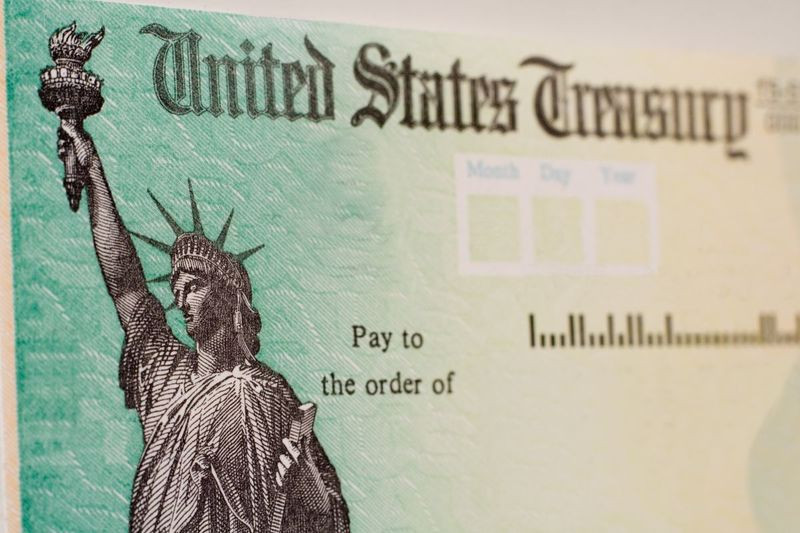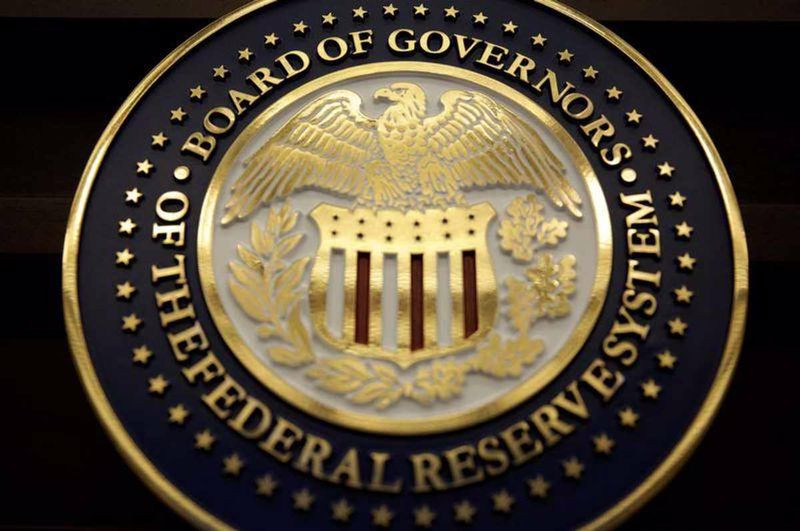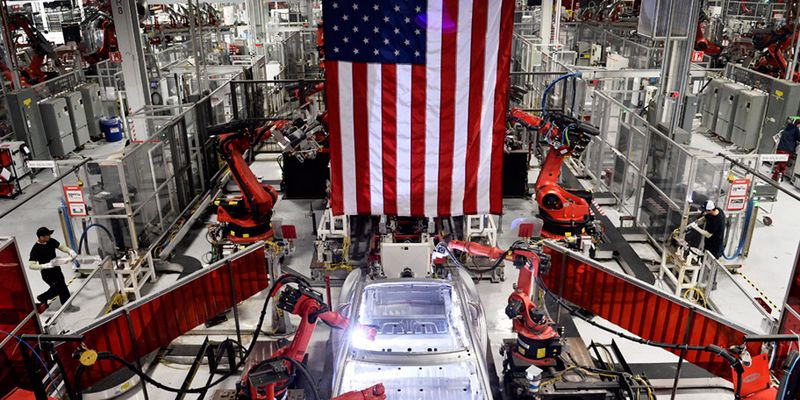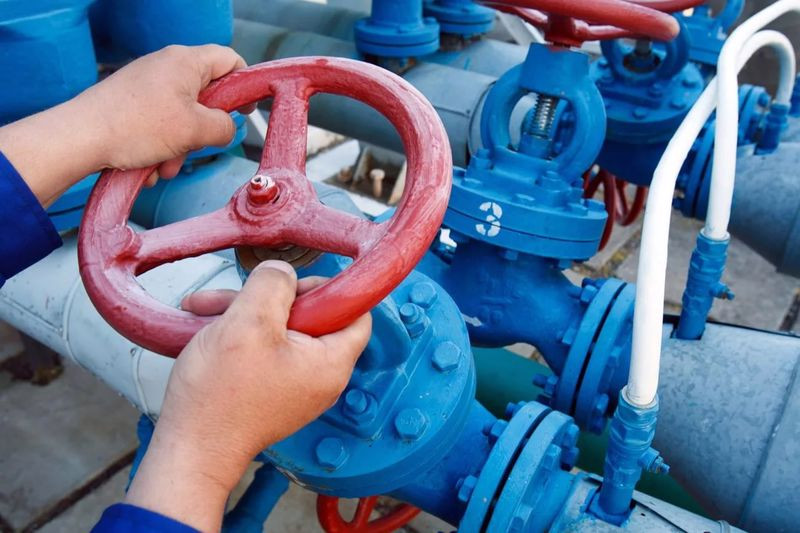The euro has depreciated by almost 12% against its American counterpart since the start of the year. That has happened largely because growing fears of a global recession supported the dollar. The single currency has suffered as investors see Europe as the epicentre of the global slowdown.
Divergence in the Fed and ECB monetary rates also contributed to this.
The US Central Bank has already increased the cost of borrowing by 150 basis points. It seems to be flexible to raise rates in the future, as the United States economy still looks resilient.
As for the European regulator, it is only preparing to raise rates. However, its flexibility is already limited, given that cutting or cutting off gas supplies from Russia to the EU could trigger an economic downturn in the region.
Flash inflation data released in the United States yesterday triggered the dollar to jump to multi-year highs of around 108.60 points. The data also put pressure on a wide range of risk assets led by US equities and the euro.
The US Department of Labor reported that US consumer prices rose at the fastest rate in more than 40 years in June. The figure climbed by 9.1% year-on-year against an increase of 8.6% a month earlier and an expected rise of 8.8%.
Data on accelerating inflation in America is not stimulating growth in the country's stock markets.
In early trading on Wednesday, main US stock indices edged down amid fears that the Fed will have to do more than what is already priced in to suppress the surge in prices. This increases the probability of a recession in the US economy. The fact that the yield on two-year US government bonds is already around 25 basis points above the yield on 10-year securities also indicates this.
According to Deutsche Bank, the 2-10 yield curve is at its most inverted.
There are more problems for the US equity market. The rapid and massive increase in US government bond yields (10-year yields rose from 1.5% at the start of the year to 3%) has made it very difficult for the S&P 500 to compete with Treasuries for investors' money.
According to Bloomberg, over the past couple of decades, slightly more than 20% of S&P 500 components could offer investors a higher dividend yield than 10-year US government bonds. This now stands at just over 10%, the lowest level since 2007. With the prospect of a recession and higher borrowing costs, US companies are choosing to save for a rainy day rather than share with investors.
Furthermore, the stronger dollar is harming US exports and foreign-currency-denominated profits of US companies.
Refinitiv estimates that on an annualized basis, each percentage point increase in the USD leads to a decline of about half a point in the S&P 500's profits.
For the S&P 500, the main problem is that major multinationals with large capitalizations have a lot of influence. For example, Alphabet, Amazon, Apple, Microsoft and Netflix account for a fifth of the index's capitalization. Some of these companies have already warned of currency headwinds.
The initial market reaction to the June inflation data waned rather quickly.
Although US stock indices slipped on Wednesday, by the end of the session they had managed to cut the losses seen during trading. In particular, the S&P 500 fell by 0.45% to 3,801.78 points.
Meanwhile, the implementation of the 'buy the rumour, sell the news' strategy caused the greenback to pull back to 107.40. The euro was able to recover, having previously fallen below $1 for the first time since December 2002.
The EUR/USD pair spiked above 1.0100, but then gave up much of this daily gain and closed near 1.0060.
The dollar moved back above 108.00 points after Atlanta Fed president Raphael Bostic said that there was a possibility of a full percentage-point increase in the Fed's benchmark rate.
Against this backdrop, traders priced in an 80% probability of an immediate 1% increase in the cost of borrowing in the United States at the end of July's FOMC meeting. On Tuesday, there was only a 7.6% chance of such a radical rate hike.
Markets seem to have overestimated expectations from the Fed. At least annual core inflation in America has been slowing for the past three months, reaching 5.9% in June against a peak of 6.5% in March.
For this reason, there is a possibility that the Fed, after the big rate hike at the end of July, will reassure the markets that it will move more measuredly from here, so as not to overcool the economy.
In September, another 50-basis-point interest rate hike to 3.25% is expected. In November, the Federal Reserve is due to rise interest rate by 50 basis point to 3.75%.
According to the futures market, this will be the end of the monetary policy tightening cycle in the US. A rate cut is already expected next summer.
At the same time, Fed policymakers do not yet believe that there are no signs of the inflationary threat.In particular, the annual inflation index could increase by 2.3% just because of rents.
If services and goods, with the exception of energy, do not become cheaper, it will threaten the regulator's plan to curb inflation. The Fed will wait for signals from this particular sector. However, so far there are none.
FOMC officials intend to continue tightening until they reach the acute phase of the recession, which will be harmful to employment. At this stage the focus will be on the labour market recovery. That would result in at least a suspension of QT and at most new QE. This could happen in the next 12 months.
So far, with the strength of the US labour market, the Fed is sticking to its current policy normalization plans. So, there is no reason to expect a policy change any time soon. Therefore, the gap between the Fed and ECB rates looks set to widen further.
"Stubbornly high inflation increases the risk that the FOMC continues to hike aggressively and triggers a recession," Commonwealth Bank of Australia analysts said. They believe this is becoming an increasingly common case scenario in the market and recession fears will continue to support USD as a defensive asset.
On Thursday, the greenback rose to a multi-year high above 109.00 after US data showed the country's producer price index jumped to 11.3% year-on-year in June from 10.9% recorded in May.
The data intensified speculation about a sharp Fed rate hike at the end of July meeting and kept global stock indices in the red zone. Key Wall Street indicators are losing about 1.5% on average today.
Reflecting investors' risk aversion, EUR/USD first reached parity and then slipped below this psychologically important mark, touching its lowest level since December 2002 at 0.9955.
Persistent euro weakness could accelerate the pair's fall towards the 0.9915-0.9910 area on the way to the next support zone of 0.9850-0.9845.
Alternatively, the 1.0100 level acts as an immediate strong resistance. Any subsequent move upwards is likely to face a tough resistance in the 1.0275-1.0280 area before the 1.0300 level.
The fundamental backdrop still favors the bears and suggests that any recovery attempt could still be seen as a selling opportunity.
EUR/USD has held above an important level since the beginning of the week. However, it broke above this mark amid increasing policy divergence between the Fed and the ECB.
The latest euro drop came after gas flows through Russia's Nordstream 1 pipeline shut for 10 days for maintenance. However, if Moscow extends the shutdown, Germany, which is already in stage two of a three-tier emergency gas plan, may be forced to ration fuel.
"If the gas pipeline that's closed for 10 days doesn't reopen and we get more gas rationing, in that situation we may not have seen the weakest levels of the euro," Barclays strategists said.
According to analysis by BNP Paribas, the euro suffers more than other developed currencies from gas price shocks, falling an average of 4.5% during such times.
JPMorgan noted the euro area is already facing "parabolic" gas price spikes, with supplies down 53% in June. Industrial powerhouse Germany has witnessed a 60% supply decline.
The bank cut its euro-dollar target to 0.95.
The worst case could bring a test of $0.90, JPMorgan said, citing the Bundesbank's forecast of a 6% hit to German GDP in the first year if supplies stop completely.
Nomura's experts reckon the euro may fall to $0.95 by end-August, but in a scenario where gas storage tanks fail to replenish by winter, it could slip to $0.90.
Citi analysts predict a Russian supply halt will send gas prices surging well above current levels of around €170 per megawatt hour.
All else being equal, the euro will fall to $0.98 if gas hits €200, while at €250, it would trade below $0.95, they added.
In theory, the ECB could intervene by selling dollars to prop up the euro as it did back in 2000, when the currency fell to around $0.83.
However, the regulator has made it clear that it may not step in this time, possibly because the euro's real exchange rate, against trade partners' currencies and adjusted for inflation, is well above where it was in 2002, the last time euro-dollar parity was hit.





